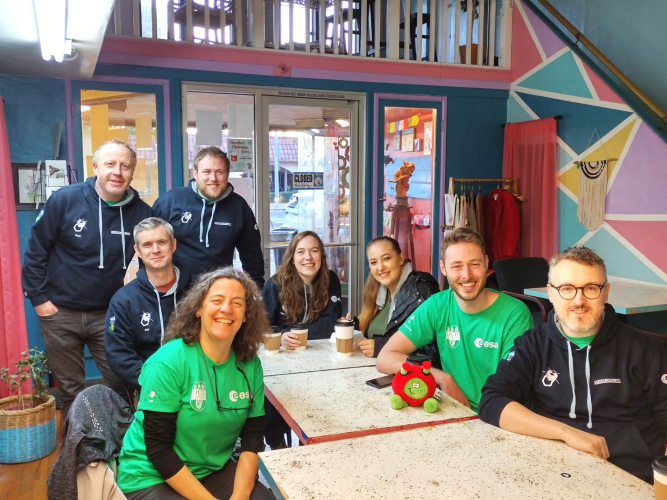Varsity students build Ireland’s first successfully launched satellite
No fewer than 50 students from University College Dublin have been involved in the construction of the Republic of Ireland’s first successfully launched satellite.
The satellite, EIRSAT-1 is a two-unit CubeSat [miniature cube satellite] equipped with three experiments and was deployed into orbit from a Falcon 9 SpaceX rocket on Friday evening from the Vandenberg Space Force Base in California, United States.
The student-built satellite was constructed under the guidance of the European Space Agency.
EIRSAT-1 is part of the ESA Academy’s Fly Your Satellite! initiative, providing university students with comprehensive training, mentoring, and hands-on guidance for the complete life cycle of a professional satellite project, from design and construction to testing, launch, and operations, the report noted.
The launch of the Educational Irish Research Satellite 1 (EIRSAT-1) has been described as a “major milestone” in the nation’s space industry.
Irish Enterprise Minister, Neale Richmond, offered his “heartfelt congratulations” to the UCD academic and student team involved in the mission, saying, “History was made here today, and everyone should be proud of the part they played in this milestone for Ireland and its space sector.”
The team which involved nine doctorate degree holders also had students from the departments of physics, mathematics, mechanical engineering and computer science.

It’s reported that the students spent about 20,000 hours on testing and problem-solving ahead of EIRSAT-1’s voyage into space, following more than six years of research, design and building.
A PhD student, Cuán de Barra, who is responsible for testing and operations, had said the satellite is not much bigger than a carton of milk, but that’s no reflection of its power.
de Barra said ahead of the launch that “it’s been a steep learning curve… no one knew how to build or launch a satellite.
“We’re trying to emphasise to the next generation – and show what’s possible at UCD – opportunities are available for young scientists,” hoping that the success of EIRSAT-1 will inspire children and help accelerate the Irish space industry.
Also Read: Nigeria to optimise use of NigComSat-1R
ESA Director-General, Josef Aschbacher, congratulated the team for the successful launch “and the start of Ireland’s first exciting adventure in orbit,” noting, “It’s only by building capacity that we can make our space ambitions become a reality, for Ireland and for Europe.”
Aschbacher added, “I’d also like to thank UCD for joining forces with ESA towards a common educational objective: boosting the skills of the young generation.”
Speaking after the launch, UCD C-Space manager Dr Ronan Wall said, “It’s incredibly exciting and deeply satisfying to have finally joined other nations across Europe and the world that are positioned to do great research and innovation from our own spacecraft.”

The Director, EIRSAT-1 and the UCD Centre for Space Research, Prof. Lorraine Hanlon, said, “The next step now is to get used to operating our new spacecraft and get the maximum research and training out of it.”
Hanlon noted that the launch delivered the “thrilling result of Ireland in space” and represented “the culmination of a lot of work by a young team and a huge amount of support by the Irish space industry.”
EIRSAT-1 has carried three experiments into low-Earth orbit (100-1,000km above Earth) and will report data back to researchers working in a command centre at UCD, the report noted.
Among these experiments is a GMOD gamma-ray burst detector, designed to investigate some of the most luminous explosions in the universe.
The rays researchers aim to observe may originate from various sources such as stars exploding at the end of their life cycles, or the merging of black holes.
EIRSAT-1 is also conducting tests on satellite protection in space, as well as an on-board navigation system. Students are now excited to receive data reports from the satellite and continue their research.
“We’re excited to get off the ground, no puns intended. I can’t wait to speak to it for the first time,” de Barra said.
Chidimma Gold

